Abstract
1. The N-(2-hydroxyethyl)alanine esterified to phosphatidic acid in anaerobic ciliate rumen protozoa has the l configuration. 2. Labelling experiments with Entodinium caudatum cultures using [32P]Pi [2-14C]ethanolamine and 32P- and 14C-labelled phosphatidylethanolamine show that phosphatidylethanolamine is the direct lipid precursor of the N-(2-hydroxyethyl)alanine-containing phospholipid. 3. Labelling experiments with [14C]starch, [14C]lactate and [14C]pyruvate with E. caudatum cultures indicate that a three-carbon glycolytic intermediate is probably the precursor of the N-(1-carboxyethyl) grouping which substitutes on the amino group of phosphatidylethanolamine. 4. [32P]phosphatidylethanolamine is catabolized by E. caudatum forming initially glycerylphosphorylethanolamine and subsequently glycerophosphate and Pi. A little phosphorylethanolamine formed may possibly arise from bacterial enzymes ingested by the protozoa.
Full text
PDF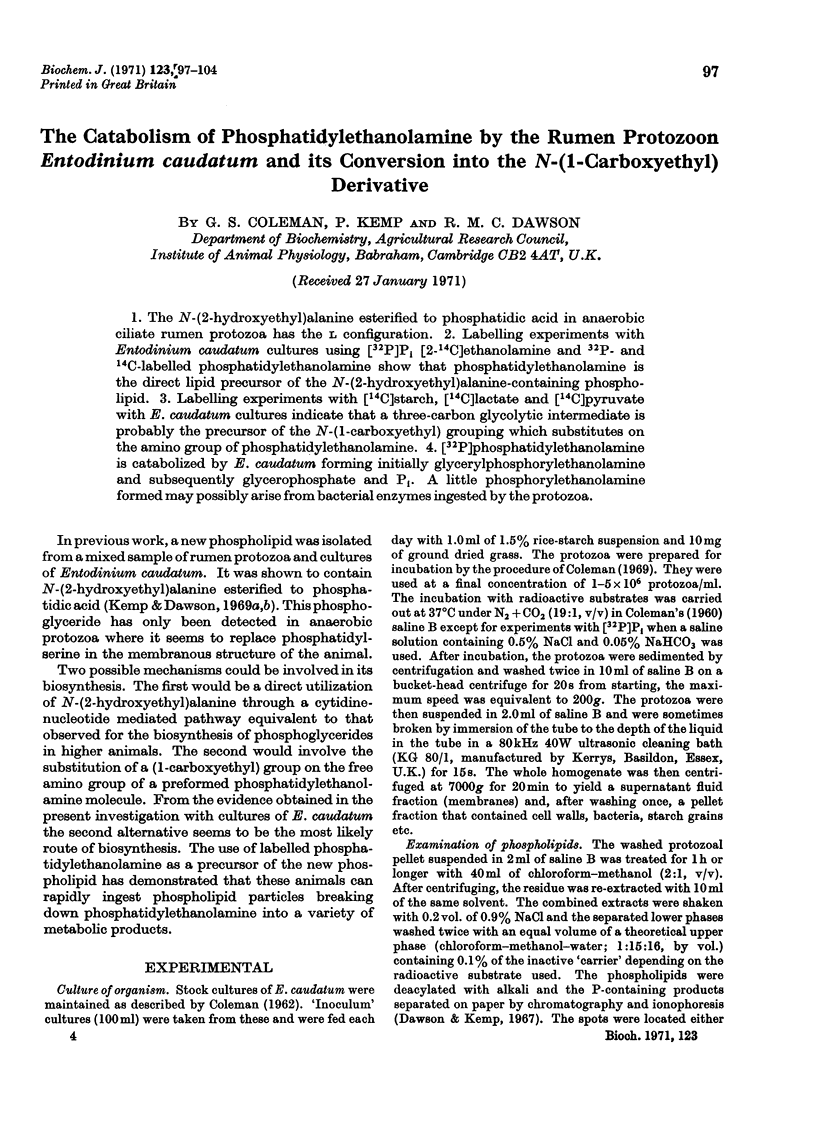
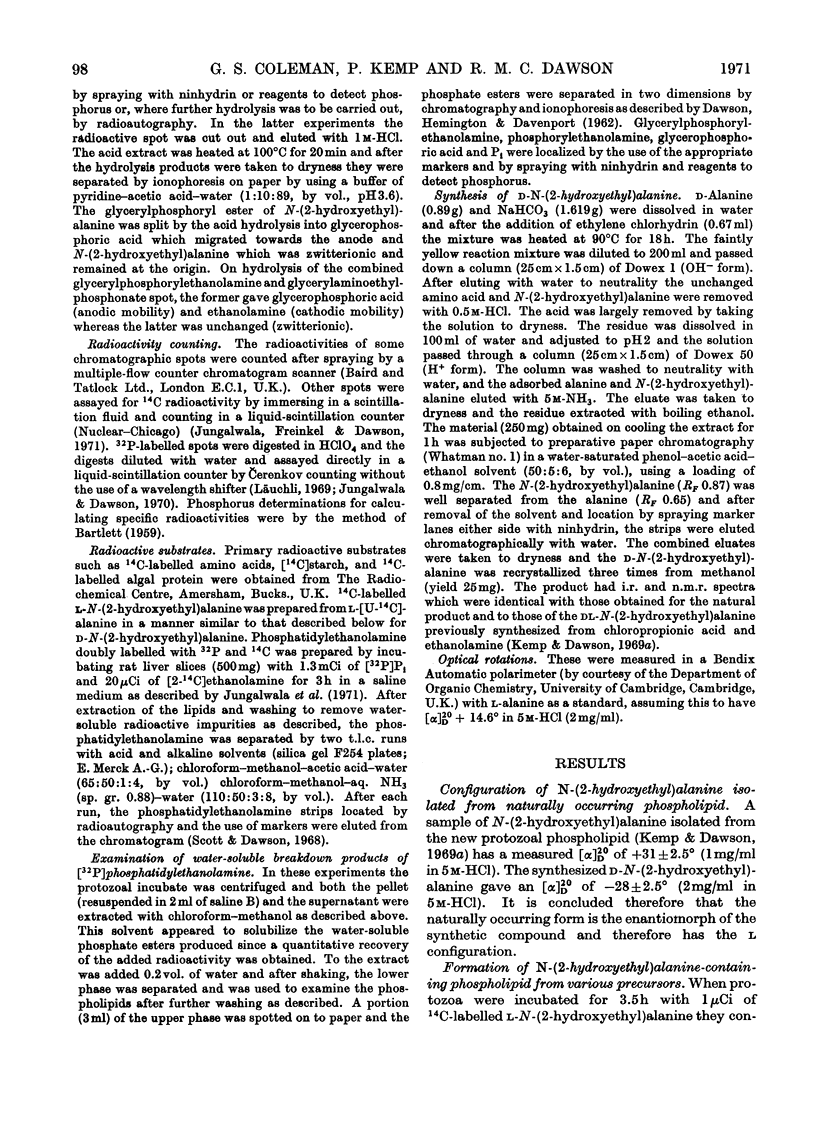
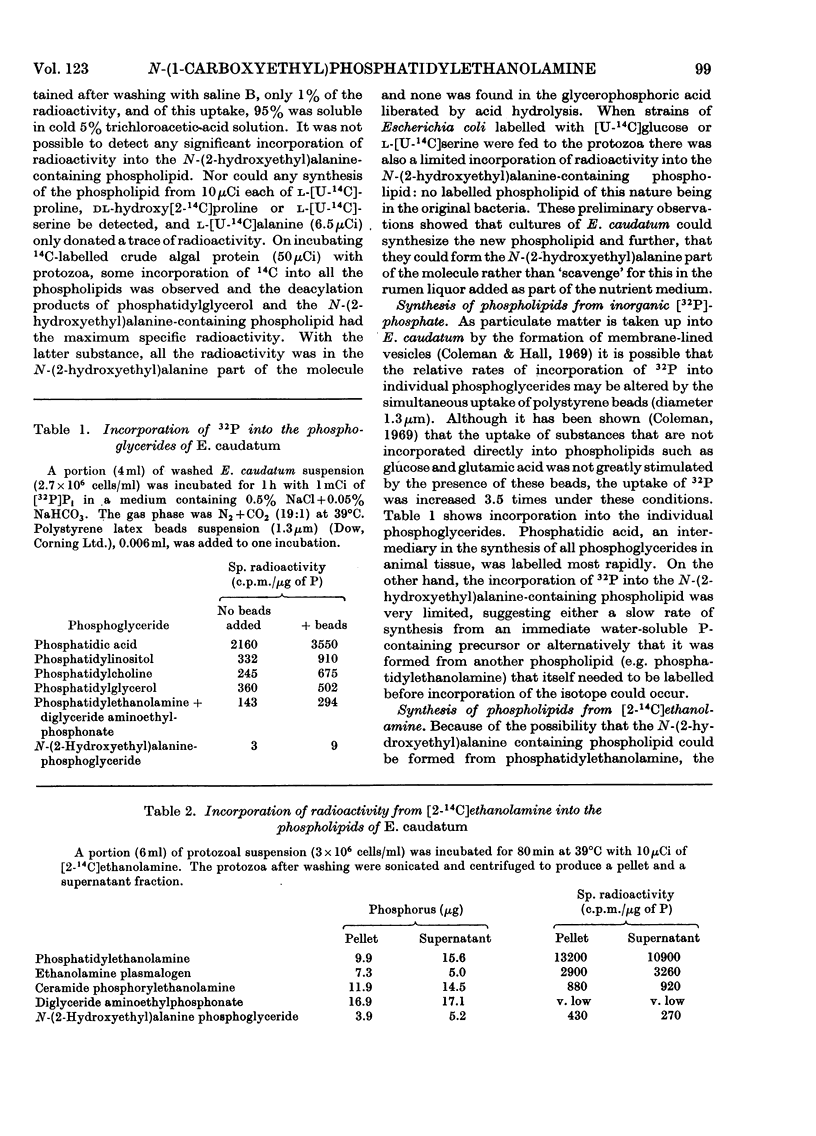
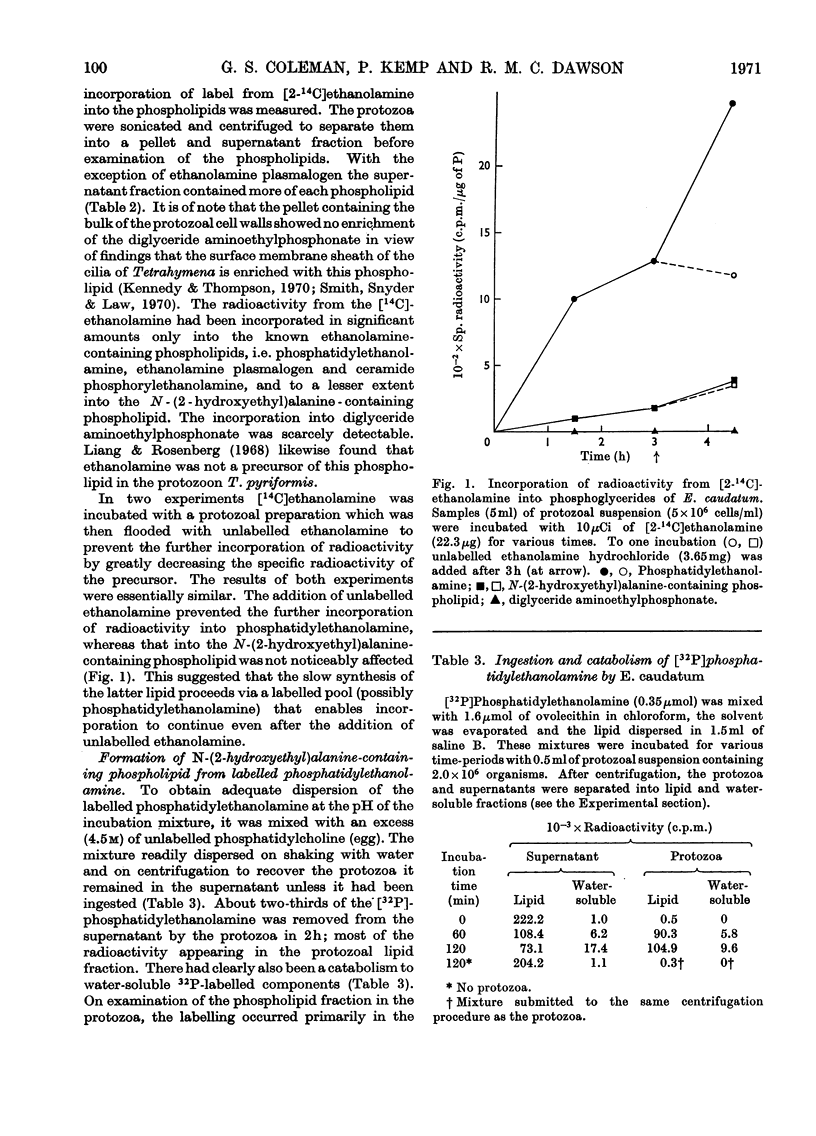
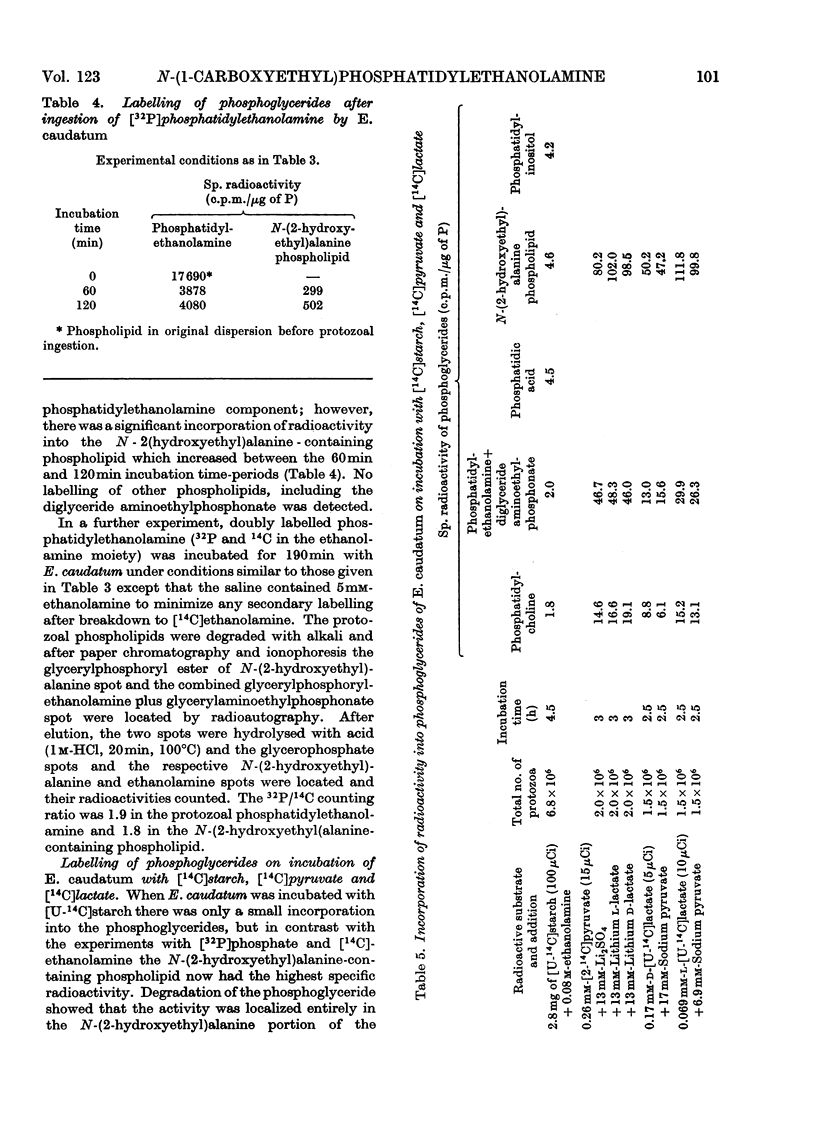
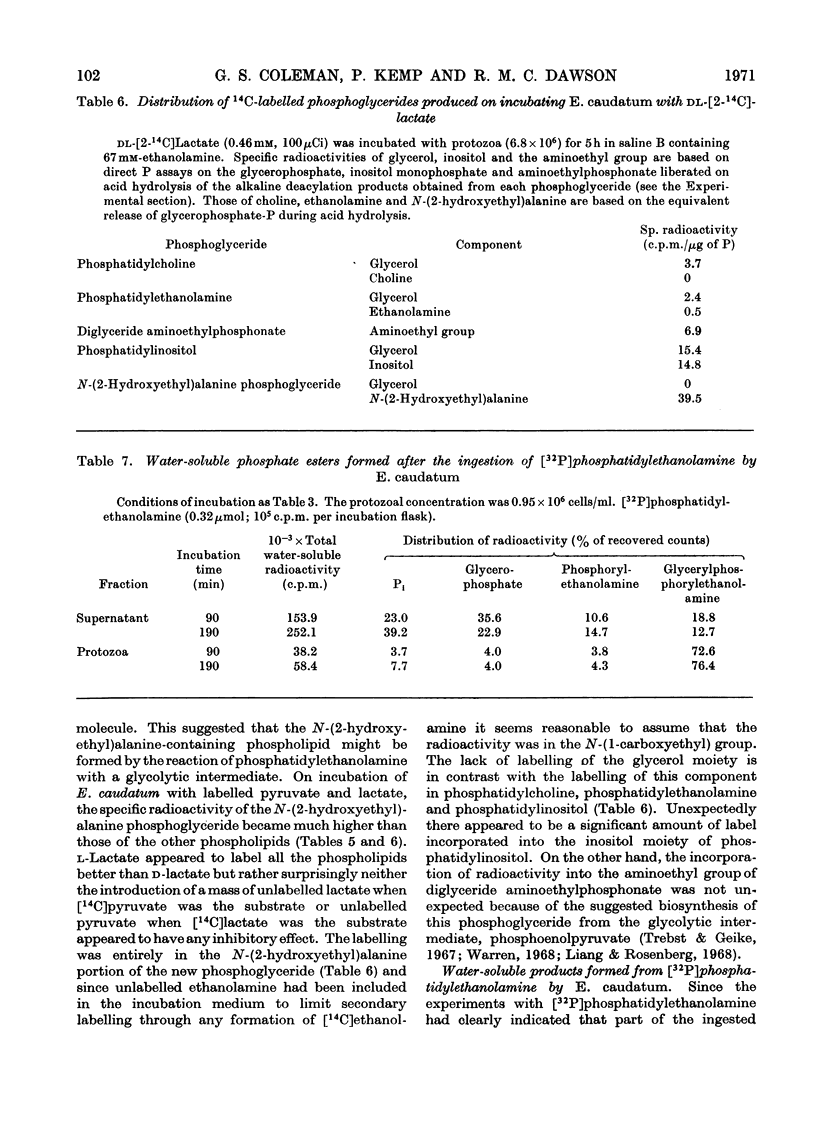
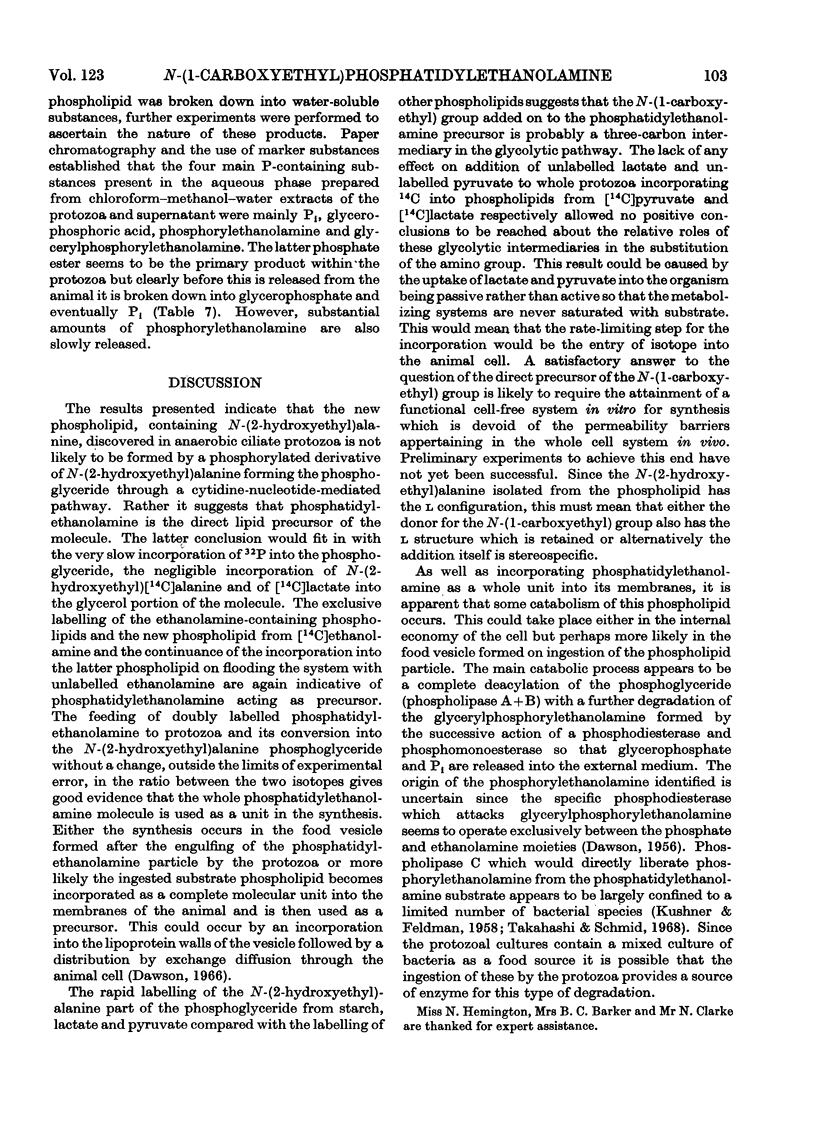
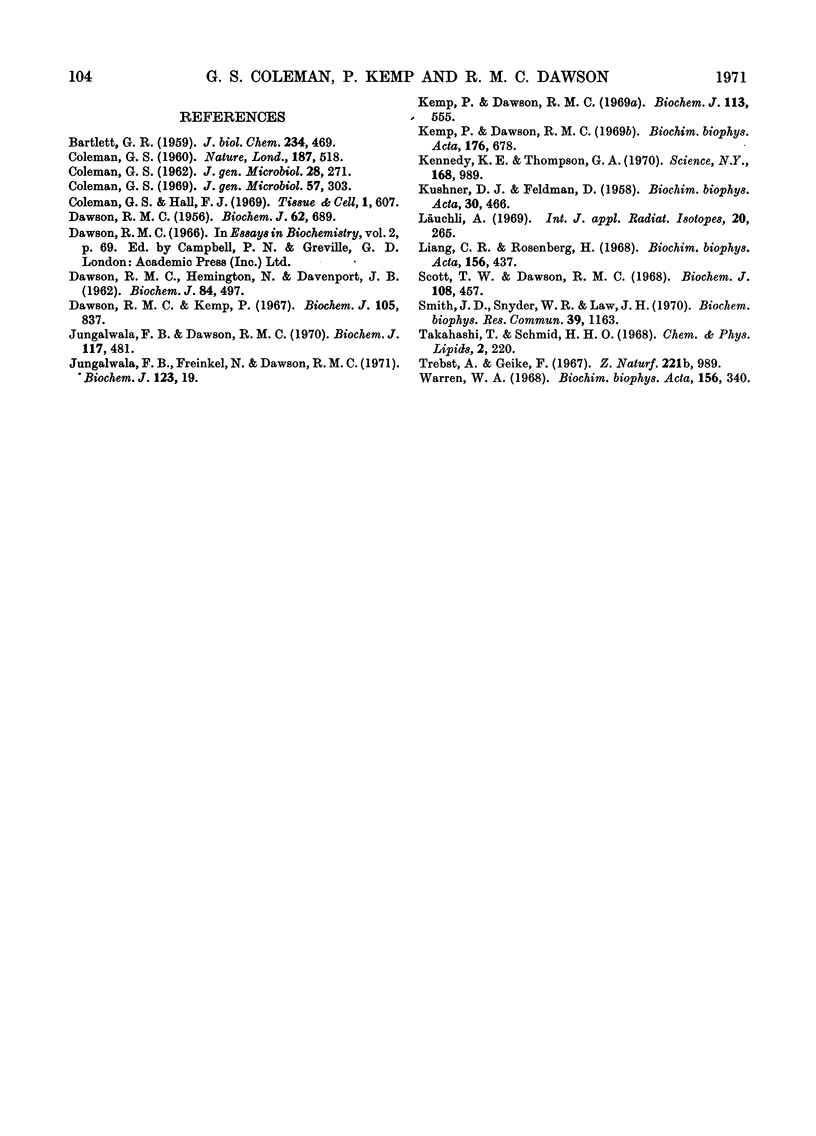
Selected References
These references are in PubMed. This may not be the complete list of references from this article.
- BARTLETT G. R. Colorimetric assay methods for free and phosphorylated glyceric acids. J Biol Chem. 1959 Mar;234(3):469–471. [PubMed] [Google Scholar]
- COLEMAN G. S. Effect of penicillin on the maintenance of rumen oligotrich protozoa. Nature. 1960 Aug 6;187:518–520. doi: 10.1038/187518b0. [DOI] [PubMed] [Google Scholar]
- COLEMAN G. S. The preparation and survival of almost bacteria-free suspensions of Entodinium caudatum. J Gen Microbiol. 1962 Jun;28:271–281. doi: 10.1099/00221287-28-2-271. [DOI] [PubMed] [Google Scholar]
- Coleman G. S. The metabolism of starch, maltose, glucose and some other sugars by the rumen ciliate Entodinium caudatum. J Gen Microbiol. 1969 Aug;57(3):303–332. doi: 10.1099/00221287-57-3-303. [DOI] [PubMed] [Google Scholar]
- DAWSON R. M., HEMINGTON N., DAVENPORT J. B. Improvements in the method of determining individual phospholipids in a complex mixture by successive chemical hydrolyses. Biochem J. 1962 Sep;84:497–501. doi: 10.1042/bj0840497. [DOI] [PMC free article] [PubMed] [Google Scholar]
- DAWSON R. M. Liver glycerylphosphorylcholine diesterase. Biochem J. 1956 Apr;62(4):689–693. doi: 10.1042/bj0620689. [DOI] [PMC free article] [PubMed] [Google Scholar]
- Dawson R. M., Kemp P. The aminoethylphosphonate-containing lipids of rumen protozoa. Biochem J. 1967 Nov;105(2):837–842. doi: 10.1042/bj1050837. [DOI] [PMC free article] [PubMed] [Google Scholar]
- Jungalwala F. B., Dawson R. M. Phospholipid synthesis and exchange in isolated liver cells. Biochem J. 1970 Apr;117(3):481–490. doi: 10.1042/bj1170481. [DOI] [PMC free article] [PubMed] [Google Scholar]
- KUSHNER D. J., FELDMAN D. Characterization of the bacterial enzyme thromboplastinase. Biochim Biophys Acta. 1958 Dec;30(3):466–475. doi: 10.1016/0006-3002(58)90091-x. [DOI] [PubMed] [Google Scholar]
- Kemp P., Dawson R. M. Characterization of N-(2-hydroxyethyl)alanine as a component of a new phospholipid isolated from rumen protozoa. Biochim Biophys Acta. 1969 Apr 29;176(3):678–679. doi: 10.1016/0005-2760(69)90245-8. [DOI] [PubMed] [Google Scholar]
- Kennedy K. E., Thompson G. A., Jr Phosphonolipids: localization in surface membranes of Tetrahymena. Science. 1970 May 22;168(3934):989–991. doi: 10.1126/science.168.3934.989. [DOI] [PubMed] [Google Scholar]
- Liang C. R., Rosenberg H. The biosynthesis of the carbon-phosphorus bond in Tetrahymena. Biochim Biophys Acta. 1968 Mar 11;156(2):437–439. doi: 10.1016/0304-4165(68)90283-3. [DOI] [PubMed] [Google Scholar]
- Scott T. W., Dawson R. M. Metabolism of phospholipids by spermatozoa and seminal plasma. Biochem J. 1968 Jul;108(3):457–463. doi: 10.1042/bj1080457. [DOI] [PMC free article] [PubMed] [Google Scholar]
- Smith J. D., Snyder W. R., Law J. H. Phosphonolipids in Tetrahymena cilia. Biochem Biophys Res Commun. 1970;39(6):1163–1169. doi: 10.1016/0006-291x(70)90682-0. [DOI] [PubMed] [Google Scholar]
- Takahashi T., Schmid H. H. Hydrolysis of ethanolamine phosphatides by phospholipase C. Chem Phys Lipids. 1968 Jun;2(2):220–222. doi: 10.1016/0009-3084(68)90026-1. [DOI] [PubMed] [Google Scholar]
- Trebst A., Geike F. Zur Biosynthese von Phosphonoaminosäuren. Die Veteilung der Radioaktivität in Aminoäthylphosphonsaure nach Einbau von positions-markierter Glucose durch Tetrahymena. Z Naturforsch B. 1967 Sep;22(9):989–991. [PubMed] [Google Scholar]
- Warren W. A. Biosynthesis of phosphonic acids in Tetrahymena. Biochim Biophys Acta. 1968 Mar 11;156(2):340–346. doi: 10.1016/0304-4165(68)90263-8. [DOI] [PubMed] [Google Scholar]


